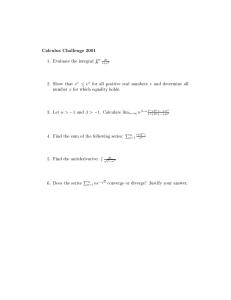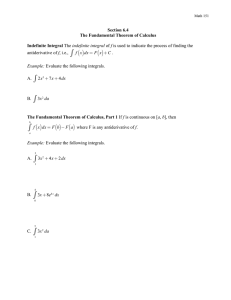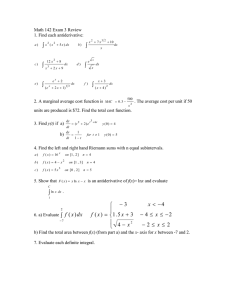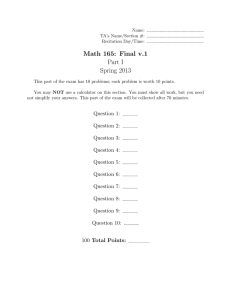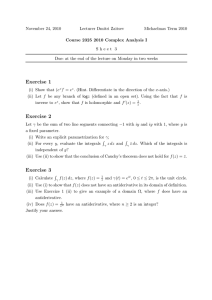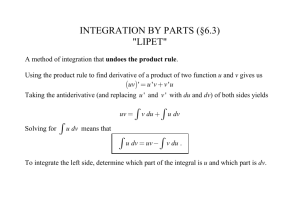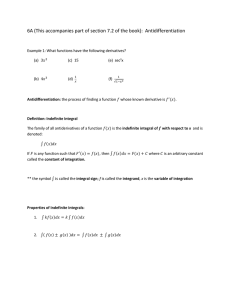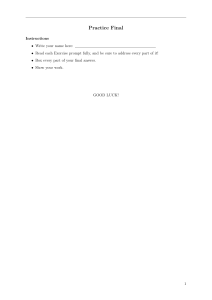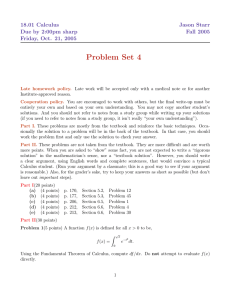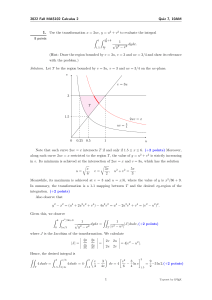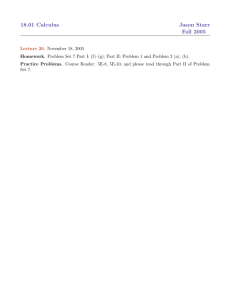Solutions for Introduction to Polynomial Calculus
advertisement
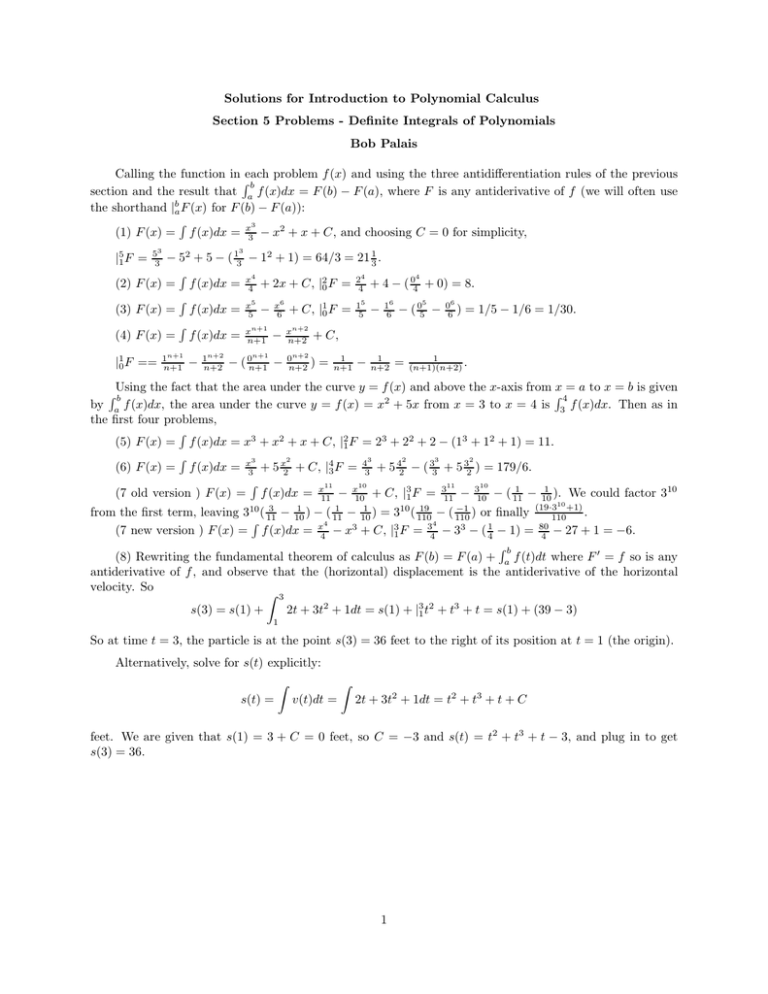
Solutions for Introduction to Polynomial Calculus Section 5 Problems - Definite Integrals of Polynomials Bob Palais Calling the function in each problem f (x) and using the three antidifferentiation rules of the previous Rb section and the result that a f (x)dx = F (b) − F (a), where F is any antiderivative of f (we will often use the shorthand |ba F (x) for F (b) − F (a)): R 3 (1) F (x) = f (x)dx = x3 − x2 + x + C, and choosing C = 0 for simplicity, 3 53 3 − 52 + 5 − ( 13 − 12 + 1) = 64/3 = 21 31 . R 4 4 4 (2) F (x) = f (x)dx = x4 + 2x + C, |20 F = 24 + 4 − ( 04 + 0) = 8. R 5 6 5 6 5 6 (3) F (x) = f (x)dx = x5 − x6 + C, |10 F = 15 − 16 − ( 05 − 06 ) = 1/5 − 1/6 = 1/30. R n+1 n+2 (4) F (x) = f (x)dx = xn+1 − xn+2 + C, |51 F = |10 F == 1n+1 n+1 − 1n+2 n+2 − ( 0n+1 − n+1 0n+2 n+2 ) = 1 n+1 − 1 n+2 = 1 (n+1)(n+2) . Using the fact that the area under the curve y = f (x) and above the x-axis from x = a to x = b is given Rb R4 by a f (x)dx, the area under the curve y = f (x) = x2 + 5x from x = 3 to x = 4 is 3 f (x)dx. Then as in the first four problems, R (5) F (x) = f (x)dx = x3 + x2 + x + C, |21 F = 23 + 22 + 2 − (13 + 12 + 1) = 11. R 2 3 2 3 2 3 (6) F (x) = f (x)dx = x3 + 5 x2 + C, |43 F = 43 + 5 42 − ( 33 + 5 32 ) = 179/6. R 11 10 11 10 1 1 (7 old version ) F (x) = f (x)dx = x11 − x10 + C, |31 F = 311 − 310 − ( 11 − 10 ). We could factor 310 10 1 1 1 19 −1 3 − 10 ) − ( 11 − 10 ) = 310 ( 110 − ( 110 ) or finally (19·3110+1) . from the first term, leaving 310 ( 11 R 4 4 (7 new version ) F (x) = f (x)dx = x4 − x3 + C, |31 F = 34 − 33 − ( 41 − 1) = 80 4 − 27 + 1 = −6. Rb (8) Rewriting the fundamental theorem of calculus as F (b) = F (a) + a f (t)dt where F ′ = f so is any antiderivative of f , and observe that the (horizontal) displacement is the antiderivative of the horizontal velocity. So Z 3 s(3) = s(1) + 2t + 3t2 + 1dt = s(1) + |31 t2 + t3 + t = s(1) + (39 − 3) 1 So at time t = 3, the particle is at the point s(3) = 36 feet to the right of its position at t = 1 (the origin). Alternatively, solve for s(t) explicitly: s(t) = Z v(t)dt = Z 2t + 3t2 + 1dt = t2 + t3 + t + C feet. We are given that s(1) = 3 + C = 0 feet, so C = −3 and s(t) = t2 + t3 + t − 3, and plug in to get s(3) = 36. 1
